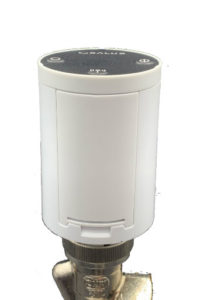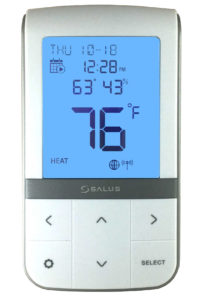Turns out that clanky radiator, commonly found under the windows in older buildings, is still doing what it was designed to do over a century ago—pump out heat so intense it can warm a space even on the coldest days. The only problem is things have changed since steam heating systems were created. Today’s building owners are searching for efficient and optimally controlled heating systems. That’s why HVAC design and manufacturer Salus has developed the technology to bring this outdated system into modern times. Here Christopher S. Robertson, director of sales for Salus North America, shares how this technology can increase comfort while maximizing efficiency.
Steam heating systems have had a reputation for being inefficient and difficult to control space temperature. Likely when you think of steam-heated spaces you think of opening windows to regulate temperature. For more than a century that has been the only real way to control the temperature, but not anymore.
Salus’ wireless technology has made these systems more efficient and comfortable than ever—enabling control. A Wireless Radiator Valve Actuator is installed on the radiator valve—paired with a battery-operated wireless thermostat that senses the room’s temperature and modulates the radiator valve actuator to maintain the desired temperature. This combination eliminates the need to run wires in a finished apartment and is priced at $175 to $200. One thermostat can control up to six wireless actuators.
- Photo courtesy of Salus
- Photo courtesy of Salus
The controls can be accessed on the thermostat or through the Smart Home application on mobile devices. Data is uploaded to the cloud so building managers can monitor one property or their entire property portfolio. This technology is increasingly crucial to improving the operation of buildings. Replacement of steam-heating systems would be prohibitively expensive. This new technology solves the problem of tenant comfort and “paying to heat the outdoors.”
When developing this tech, Salus considered the relationship between building manager and tenant. The battery-powered thermostats generally last two heating seasons so managers aren’t disturbing tenants to replace batteries. The wireless valve actuator has an optional lithium-ion battery that will last up to eight years. Per the Department of Energy, such system upgrades can reduce energy costs by 20 to 35%, depending on building size and chosen technology. Steam heat is often thought of as what your grandmother had, but when controlled, it’s a good quality heat. Unlike other heating systems, it heats a space quickly, and it is not dry in the winter like forced air.




